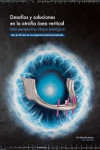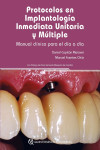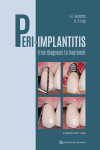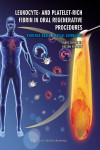MINI-IMPLANTS THE ORTHODONTICS OF THE FUTURE
Ellouze, Skander / Darque, Franҫois
Producto agotado
Datos técnicos
- ISBN 9782366150186
- Año Edición 2014
- Páginas 240
- Encuadernación Tapa Dura
- Idioma Inglés
Sinopsis
Who, in the course of orthodontic treatment, has not been faced with the harsh reality of lost anchorage?
What orthodontist has not wished to have the ability to control orthodontic tooth movement in every type of situation in order to focus exclusively on the treatment aims?
Within this book are the keys to success!
More than any other innovation, mini-screw implants have made a major contribution in recent years to the ongoing development of orthodontic concepts.
For the first time, it is possible to overcome the limitations related to anchorage, avoid the need for patient cooperation, and offer new treatment options that were unthinkable just a few years ago.
Drawing on the early pioneering work of teams such as the one led by Kyung, and by increasing the number of indications, the authors very quickly came to define mini-screw-supported biomechanical protocols for every type of malocclusion.
Today, a deeper understanding of their impact on diagnosis, treatment strategies, and biomechanics is enabling these new treatment modalities to become even more effective. Clearly defined indications, codified protocols, and reproducible therapeutic efficacy and clinical results have now turned mini-screws into a full-fledged treatment system.
Índice
PART I
Chapter 1. Choosing the mini-implant
Chapter 2. Mini-implant placement techniques
Chapter 3. The biomechanics of mini‑implants
Part II
Chapter 4. Maxillary molar distalization
Chapter 5. Mandibular molar distalization
Chapter 6. Molar protraction
Chapter 7. Orthodontic management of arch asymmetries using miniimplants
Chapter 8. Molar vertical control in hyperdivergent patients and in skeletal open bites
Chapter 9. Mini-implant-assisted expansion
Chapter 10. Management of mini‑implant-supported multidisciplinary treatments
The evidence regarding mini-implant-driven orthodontics
Conclusion
Index
Otros libros que te pueden interesar

Desafíos y soluciones en la atrofi...
160.00€ 152.00€
- ¿Quiénes somos?
- Gastos de envío
- Política de privacidad
- Políticas de devolución y anulación
- Condiciones Generales de contratación
- Contacto
2025 © Vuestros Libros Siglo XXI | Desarrollo Web Factor Ideas








